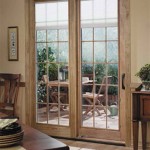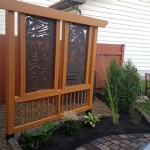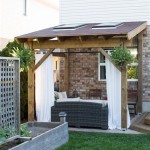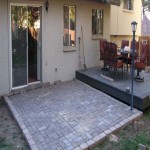How Much Does It Cost to Screen in a Patio?
Enclosing your patio with screens can transform your outdoor space into a comfortable and inviting retreat, extending its usability throughout the year. It allows you to enjoy fresh air and natural light while providing protection from pesky insects, harsh sunlight, and inclement weather. While the benefits are clear, the question of cost can be a significant factor in deciding whether to move forward with this project. The cost of screening in a patio can vary widely depending on several factors, including the size of the patio, the materials used, and the complexity of the project. To make an informed decision, it is essential to understand the factors that influence the cost and explore the different options available.
Factors Influencing the Cost of Screening a Patio
Several factors affect the overall cost of screening in a patio, making it difficult to provide a definitive price range. Here are the key factors that contribute to the cost variation:
1. Patio Size
The size of your patio is a primary determinant of the cost. Larger patios require more materials, labor, and time to complete the screening process. For instance, a 10x10 foot patio will naturally require less material and effort compared to a 20x30 foot patio. It is essential to consider the square footage of your patio when estimating the project's expense.
2. Materials
The choice of materials significantly impacts the cost. Various options are available for screens, frames, and roofing, each with varying costs. For instance, aluminum frames are generally more affordable than wood frames, while fiberglass screens are less expensive than more durable stainless steel screens. Choosing premium materials often translates to a higher cost but can provide greater durability and longevity. Consider your budget and desired aesthetics when making material selections.
3. Complexity of the Project
The complexity of the project can also influence the cost. Simple screening projects involving straight lines and standard dimensions tend to be more affordable. On the other hand, projects with custom shapes, angles, or intricate designs will likely require more specialized labor and materials, leading to a higher cost. If your patio has unique features or requires adjustments to existing structures, expect the price to reflect the added complexity.
4. Labor Costs
Labor costs are a substantial portion of the total cost. The complexity of the project, the location, and the expertise of the contractor all contribute to labor costs. Hiring professionals generally results in higher costs but ensures quality construction and peace of mind. However, DIY projects can save money, but they may require more time and effort, and you should assess your skills before undertaking the task.
5. Additional Features
Additional features can further influence the cost. Adding features like sliding doors, retractable screens, or integrated lighting enhance the functionality and aesthetics of your screened patio. However, such features will inevitably increase the overall cost. Before adding extras, carefully consider their value and alignment with your budget and project goals.
Common Screening Options and Cost Estimates
To provide a better understanding of the cost ranges, let's explore common screening options and their associated costs:
1. Basic Screen Enclosure
A basic screen enclosure using aluminum frames and fiberglass screens is generally the most affordable option. For a 10x10 foot patio, expect to spend around $1,000 to $2,000 for materials and labor. This estimate can vary based on the region, labor rates, and individual contractor pricing.
2. Custom Screen Enclosure
A custom screen enclosure with wood frames and stainless steel screens offers a more premium look and improved durability. This option typically costs more, ranging from $2,000 to $4,000 for a 10x10 foot patio. The cost can climb higher for intricate designs or larger patios.
3. Retractable Screen Systems
Retractable screen systems offer flexibility by allowing you to close and open the enclosure as needed. These systems are generally more expensive, ranging from $3,000 to $6,000 or more depending on the size and features. Retractible systems are an excellent investment if you desire flexibility and enhanced functionality.
DIY vs. Professional Installation
Deciding between DIY and professional installation is crucial in managing costs. While DIY projects can save money, they require time, effort, and specific skills. If you are comfortable with woodworking and construction, tackling the project yourself can be cost-effective. However, if you lack the skills or time, hiring a professional ensures proper installation and reduces the risk of costly mistakes. Weigh the potential savings against the time commitment, skills, and potential risks before making a decision.
Conclusion
The cost of screening in a patio is a factor to consider when planning this project. Understanding the factors that influence the cost, exploring different options, and weighing the benefits of DIY versus professional installation can help you make an informed decision that aligns with your budget and project goals. With careful planning, you can transform your patio into a delightful sanctuary, extending your enjoyment of the outdoors throughout the year.

How Much Does It Cost To Add A Screened In Deck Or Porch Your House Real Estate U S News

How Much Does A Screened In Porch Or Patio Cost 2025

How Much Does A Screened In Porch Or Patio Cost 2025

How Much Do Retractable Screens Cost Screen Factors

Factors In Screen Enclosure Cost And How To Maximize Your Budget

How Much Do Patio Enclosures Cost 2025 S

How Much Does It Cost To Enclose A Porch 2025 Data Angi

What S My Dream Screen Porch Going To Cost

Here S The Cost To Add A Screened In Porch 2025

How Much Does A Pressure Treated Screened Porch Cost
Related Posts








